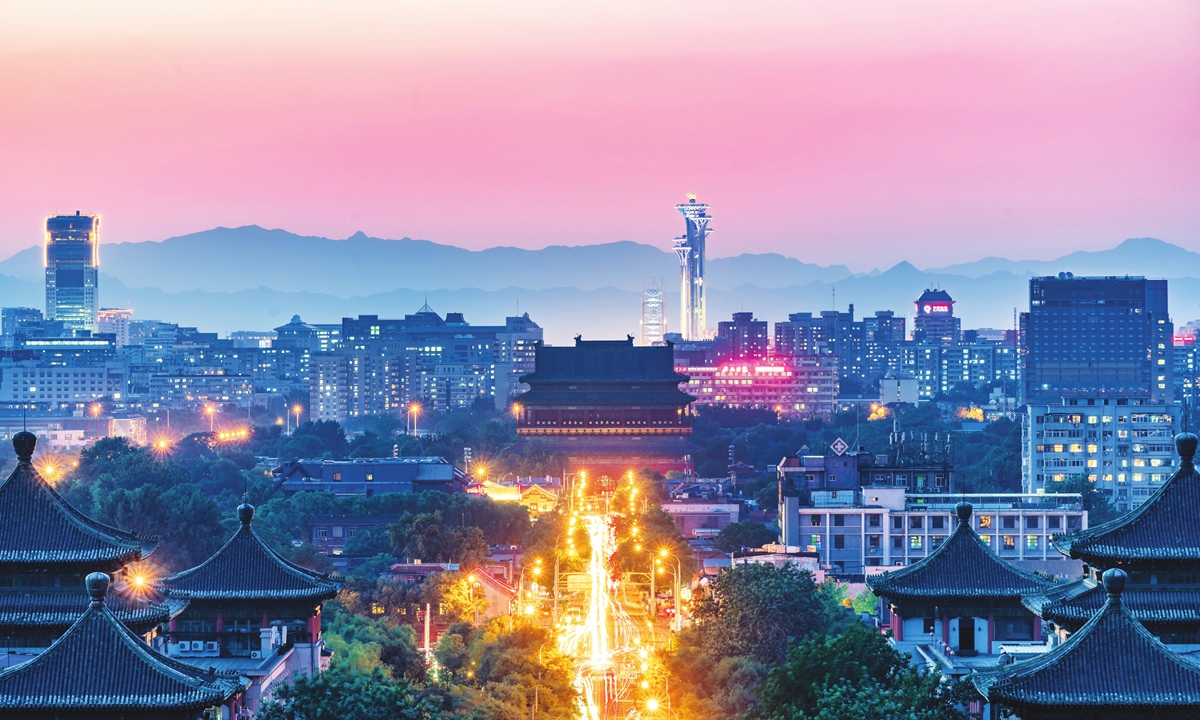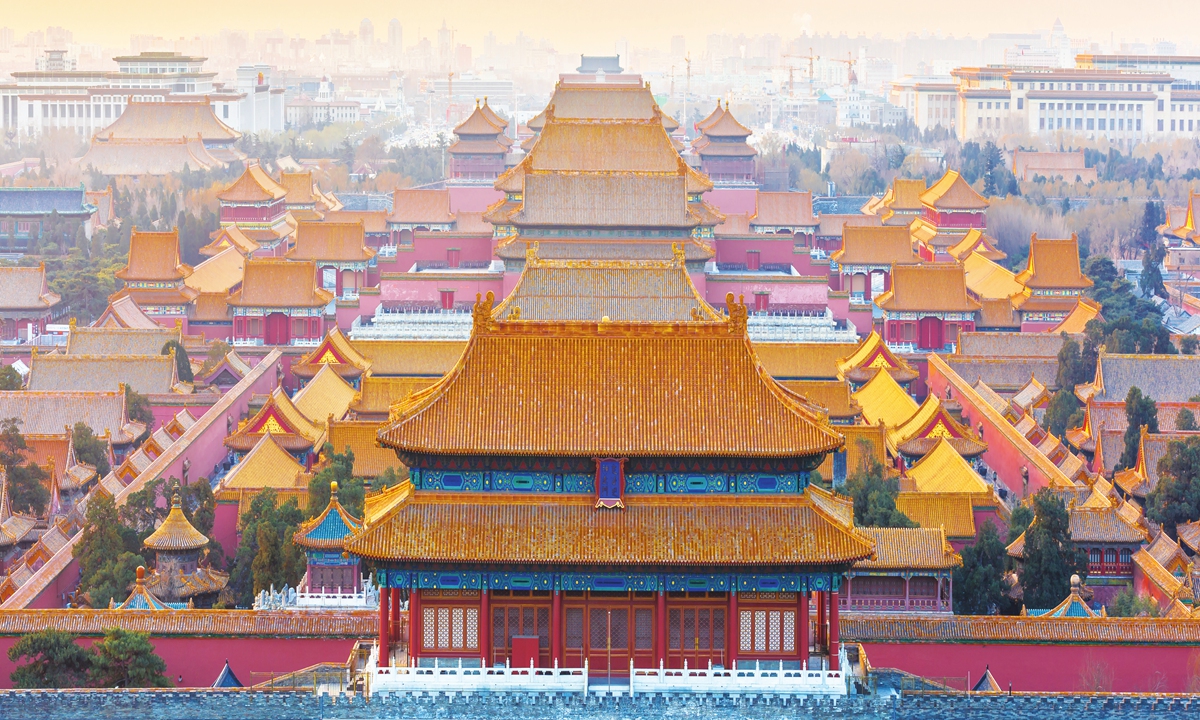
The Drum Tower in Beijing Photo: VCG
The application for the Beijing Central Axis, the core area of China's capital city, has taken one more step ahead to becoming a UNESCO World Heritage Site. The Central Axis will be part of China's 2024 application project, the government authority overseeing the application announced on Sunday.
The Beijing Central Axis, seen as one of the most important representations of Chinese civilization, refers to the core area of the ancient capital city that stretches 7.8 kilometers from the Yongding Gate in the south to the Bell Tower and Drum Tower in the north. This area tells the stories of emperors from the Yuan Dynasty (1279-1368) to the Qing Dynasty (1644-1911), as well as records the lives of both popular figures and common people.
Li Qun, head of China's National Cultural Heritage Administration, announced at the Dialogue on Conservation of World Heritage and Historic Cities held in Beijing on Sunday, that the Central Axis will be officially listed as an application item for the title of World Heritage Site in 2024.
Diverse methods to advance the application have been used, including digital technologies. For instance, visitors can travel through time and space, moving between the past and the present and learn about 14 cultural heritage sites along the Central Axis by using a newly-launched mobile application.
When talking about the decision, Lü Zhou, vice president of the Chinese Commission for the International Council on Monuments and Sites, told the Global Times that members joining in the application work feel both excited and pressed for time, as there are still many preparations waiting to be completed.
Final stages 2022 marks the 40th anniversary of China's Historic Cultural City System and the 50th anniversary of UNESCO's adoption of the Convention Concerning the Protection of the World Cultural and Natural Heritage. To promote the Central Axis' World Heritage Site application as well as conservation of its historical and cultural heritages sites, the Dialogue on Conservation of World Heritage and Historic Cities was held on Sunday in Beijing.
More than 20 domestic and foreign experts, including Lü and director of UNESCO's World Heritage Center Lazare Elondou Assomo attended to discuss conservation of historical cities and their cultural relics at the event. Lü said that to ensure the application can successfully be submitted in 2024, they need to hand in the application materials and text by February 2023.
"The preparation of the text is in the final stage of polishing and translation," he noted.
In 2020, the Beijing municipal government approved a three-year action plan for the application of the Beijing Central Axis as a World Heritage Site. The plan includes more than 40 preparation projects such as protecting cultural relics, improving the environment and managing illegal buildings.
Lü added all these preparations are on schedule to be completed by June 2023, allowing the Beijing Central Axis to better meet the standards of the World Heritage Site. To supplement the cultural and historic atmosphere of the southern part of the Central Axis, archeological work such as excavating ancient water wells in the Tianqiao Historical Area is currently underway.
Experts said that the Beijing Central Axis reflects the traditional pursuit of symmetry in Chinese aesthetics.
Most of the essential buildings in the Old City of Beijing were built along the axis. The Central Axis ingeniously organized the imperial palaces, the imperial city, temples and altars, markets and streets. As the most representative and important section of the Old City of Beijing, the axis is the core of old Beijing's spatial pattern and demonstrates the magnificent spatial order of its urban space.
Important locations include the Yongding Gate, Temple of Heaven, Temple of Agriculture, Imperial Ancestral Temple and the Forbidden City, which are uniformly distributed on both sides of the Central Axis.
Profound significanceAssomo said at the dialogue that Beijing alone boasts seven sites of Outstanding Universal Value already inscribed on the World Heritage List and that most of them are located in the historic center of the city.
"Exceptional cities have often resulted in exceptional heritage, and it is no accident that out of the 897 cultural sites on the World Heritage List, 136 are historic cities, centers and towns, representing over 15 percent of all properties worldwide. This illustrates that the conservation of World Heritage and the safeguarding of historic cities are inseparable," Assomo noted.
Shan Jixiang, head of China Cultural Relics Academy and former head of Beijing's Palace Museum, told the Global Times that the application will benefit the conservation and revival of cultural heritages along the Central Axis by inspiring more people to learn about the heritage site and increase awareness of protection efforts.
To close the gap between the public and cultural relics as well as make Beijing residents realize the Central Axis is right in their own backyard, the government has launched diverse digital products, including a digital museum, digital Central Axis and virtual tourism lines for people to enjoy.
The historical scenes and lost cultural relics of the central axis are digitally reproduced, breaking the limitations of time and space and allowing people to experience the history of the Central Axis that has taken place over the past eight centuries.

The Forbidden City, which lies along Beijing's Central Axis Photo: VCG





